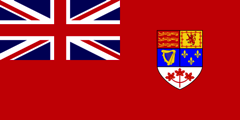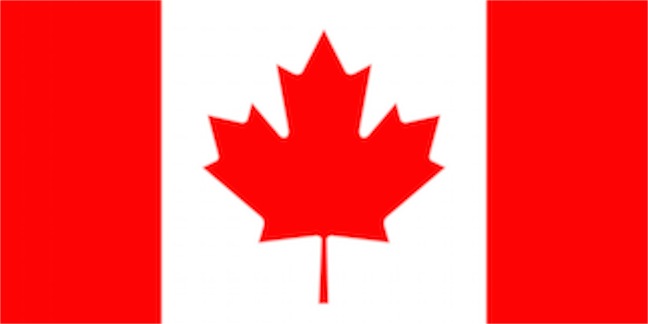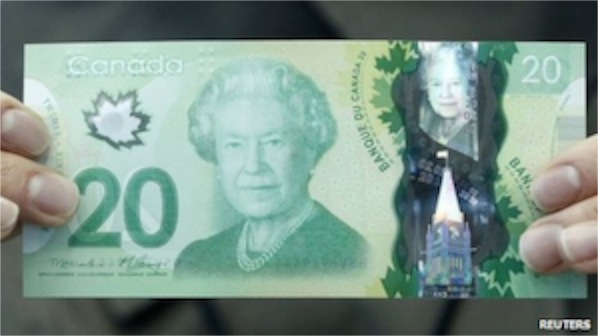Canadian currency
19/01/13 05:37



The Bank of Canada website touts the new bills as the best thing that has happened to Canada since someone learned how to tap a maple tree and make syrup for pancakes and cooking. The new polymer notes look and feel different from the old paper notes. They are now available in $20, $50, and $100. $5 and $10 bills are coming later this year. Canadians have no use for $1 bills with coins for $1 and $2 in common circulation.
The new bills are supposed to be easy to check and hard to counterfeit. The notes have a very smooth texture because they are made from a single piece of polymer. There is raised ink on the numbers, the shoulders of the portrait and the Bank of Canada text. There are two transparent windows with security features in them. The large window has a metallic portrait and building in it. They change colors depending on the angle of the light. But it is the small window that is causing some Canadians to raise their eyebrows. In the small window a circle of numbers, matching the note appears when the bill is held up to a light source.

Bank of Canada officials say the image is a “stylized” leaf, created with the help of a botanist. But Sean Blaney, senior botanist at the Atlantic Canada Conservation Data Centre, thinks that is just an after-the-fact excuse. He says the bank officials got confused. The Norway maple is a popular tree in central and eastern Canada. The problem is that it is an immigrant, having been imported from Europe. There is no way a real botanist would confuse the Norway maple with the native Sugar maple, according to Julian Starr, botany professor at the University of Ottawa. He cites the leaf on the Canadian flag, which is also stylized, but in such a way that it still looks like the native species.
Up north, where the nights are long in the winter, they have plenty of time to argue about their new bank notes. Some Canadians are also complaining that the new money is too slippery to work in vending machines. Down south, in the USA where I live, I’m having trouble thinking of an occasion when I might want to use a $20, $50 or $100 bill in a vending machine. I still save quarters for the car wash even though the wash I use now accepts $1 and $5 bills. I’m thinking that if I lived in a country with $1 and $2 coins, I’d never need to use a bill in a vending machine. But then again, I’m not Canadian, am I, eh?
I guess if I had enough of the new Canadian bills I might purchase a copy of the Canadian Oxford Dictionary so that I could learn the subtleties of the use of that oft-heard phrase. According to that dictionary the only usage of “eh?” that is exclusive to Canada is for “ascertaining the comprehension, continued interest, agreement, etc., of the person or persons addressed” as in , “it’s four kilometers away, eh, so I have to go by bike.”
In my experience, Canadians also use the phrase to turn an declarative sentence into a question. Down here we might say, “The weather is nice.” Up there they say, “The weather is nice, eh?” In some parts of Canada, the use of the phrase is so common that it makes its way into the end of nearly sentence, eh?
I’ve heard that while the Cleveland Brass plays the famous jazz standard, “Take the A Train,” the Canadian Brass plays their own distinctive style: “Take the train, eh?” And old-timers will remember that roving band of vigilante-style do-gooders known up there as “The eh? Team.” After all, children learn at an early age how to spell the name of their country: “C eh? N eh? D eh?” Ok, I know those are cheap jokes and I already devoted one blog to cheap jokes this week. What do I know aboot it?
Actually I think the new currency is a good idea. Something that is more durable and long lasting makes sense. Bills that can be distinguished by color make sense. Raised ink that can be easily detected by blind persons makes sense. High-tech security features that make the currency virtually impossible to counterfeit make sense.
But, then, I guess I’ve never been all that passionate about the shape of maple leaves, eh?